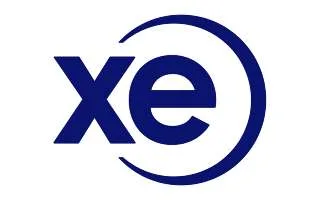
- Exchange rates typically better than banks
- Instant transfers to 190+ countries
- 24/7 human support team
- Seamless local & global payments
Banks and other financial institutions use IBAN and SWIFT codes to identify banks, branches and individual bank accounts around the world. The codes are used to ensure that when you send an international money transfer, it ends up in the right account.
But what’s the difference between IBAN vs SWIFT codes, and which code do you need when sending money overseas? Keep reading to find out.
| What it does | Description | Where you can find it | Example | |
|---|---|---|---|---|
SWIFT code | Identifies a specific bank and branch | A SWIFT code is an alphanumeric number containing information that identifies a bank and a specific branch. It can be 8 or 11 characters long, depending on which bank and branch it refers to. | Bank statement, online and mobile banking, enquire at your bank | ROYCCAT2 |
IBAN | Identifies a specific bank account | An IBAN is an alphanumeric number containing information that identifies a country, bank, branch and individual account. With lengths fixed by country, IBAN codes can be up to 34 characters. | Bank statement, online and mobile banking, enquire at your bank | GB 29 NWBK 601613 31926819 |



SWIFT stands for the Society for Worldwide Interbank Financial Telecommunication, which is a messaging network used by over 11,000 banks and financial institutions around the world.
A SWIFT code is used to identify a specific bank or a specific bank branch. Each bank or financial institution in the SWIFT network has its own SWIFT code, including banks in Canada.
SWIFT codes are sometimes also referred to as BIC codes (Bank Identifier Codes).
A SWIFT code can be 8 characters long if it identifies a bank, or 11 characters long if it identifies a specific bank branch.
An example of a SWIFT code is this one for the Royal Bank of Canada (RBC)‘s International Trade Centre location in Calgary: ROYCCAT2CIC. When we break down this SWIFT code, we discover:
No. For domestic payments, Canadian banks use a 5-digit transit number to identify your specific bank branch. You can find your transit number by signing in to online or mobile banking or by reading your bank statement.
In the US, a 9-digit routing number is used instead of a transit number. The UK uses a 6-digit sort code. In Australia, each bank branch is identified by a 6-digit Bank State Branch (BSB) number.
IBAN stands for International Bank Account Number. Unlike a SWIFT code, an IBAN can be used to identify a specific bank account.
IBANs are used in most European countries and some other locations around the world, but they’re not used by Canadian banks. However, if you’re sending a money transfer from Canada to a country in the European Union, for example, you’ll need to provide your recipient’s IBAN.
An IBAN contains information that identifies a country, bank and account number. The length of IBAN codes differ from country to country but can be up to 34 characters long.
An example of an IBAN code for NatWest in the UK is GB 29 NWBK 601613 31926819. Breaking down our UK IBAN code, we find:
When you send an international money transfer, you’ll need to enter your recipient’s bank account details to ensure that the funds go to the right place. But whether or not you need to enter a SWIFT code or an IBAN depends on where you’re sending money.
Let’s look at an example. Tom’s twin daughters are both studying overseas, one in France and the other in Australia. He wants to send them both $500 as a birthday gift, so he knows he’ll have to enter different codes to get the money into each daughter’s account.
To send money to France, he needs to provide his first daughter’s 27-digit IBAN number for her account with BNP Paribas: FR 14 20041 01005 0500024M038 06. This code consists of:
To send money to Australia, he needs to enter the 11-digit SWIFT code for his daughter’s National Australia Bank account: NATAAU3303M. This code consists of:
IBAN and SWIFT codes identify specific banks and accounts around the world. When you send an international money transfer, these numbers are important to ensure that your money is deposited into the right account.
Learn more about getting the best rates and fees in our international money transfers guide.
Looking for alternatives to TorFX for sending money abroad? Check out these reputable money transfer services.
Paying off an overseas debt with an international money transfer can lead to huge savings on fees and interest.
Transfer agents, mobile wallets and online credit card payments don’t necessarily require a bank account.
Browse money transfer services like Remitly to see if you can send send money overseas faster and cheaper.
We compare 10 Venmo alternatives to help you find the mobile payment app that suits you.
Looking for a money transfer service like Wise? Check out these four Wise alternatives.
Fast, affordable, safe and easy to use — these are the best money transfer apps in Canada.
Learn more about transferring money overseas quickly, easily and safely in an emergency.
Ever wondered how long it takes for an international wire transfer to arrive in your recipient’s bank account? Find out here.
What bank account details do you need to provide to send or receive an international money transfer? Your guide here.